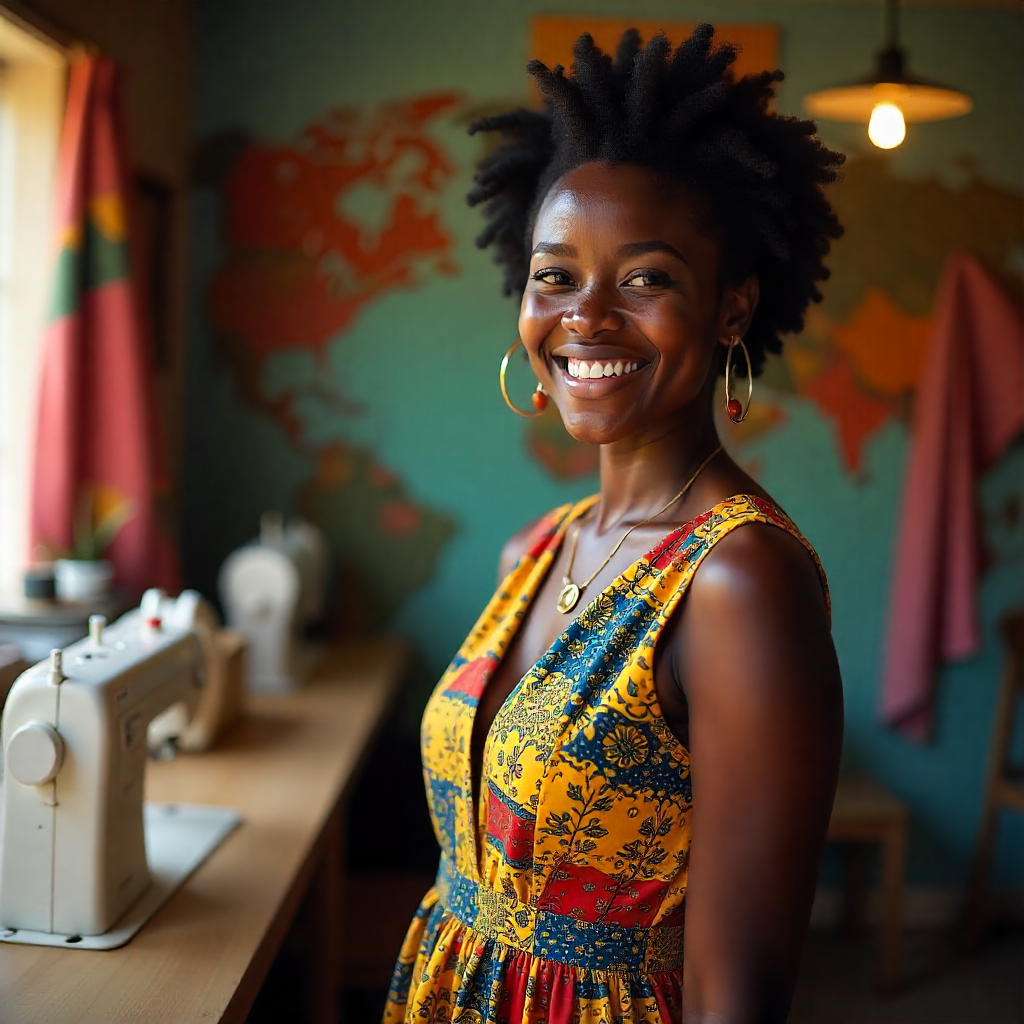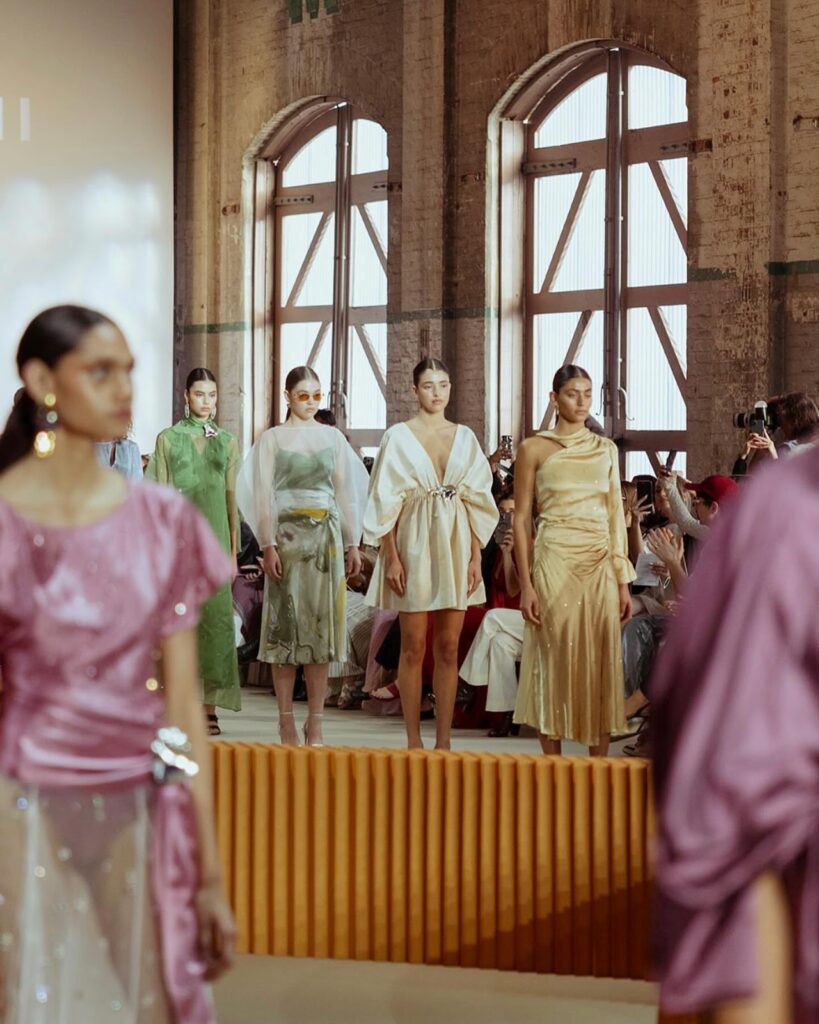Fashion design is a dynamic and glamorous field that offers a variety of career opportunities. From the classroom to the runway, a fashion designer's journey combines creativity, technical skills, and industry knowledge. This article outlines the steps needed to build a successful fashion design career, from graduation to showcasing your work on the runway.
.jpeg)
- The Path to Becoming a Fashion Designer
- Educational Requirements
- Essential Skills
- Building a Strong Portfolio
- Gaining Industry Experience
- Internships
- Apprenticeships
- Networking in the Fashion Industry
- Fashion Events and Shows
- Social Media and Online Presence
- Starting Your Fashion Line
- Creating a Business Plan
- Funding and Financing
- Showcasing Your Work
- Runway Shows
- Digital Platforms
- Choose your fashion career with Amor Design Institute
- Staying Current with Trends
- Conclusion
- FAQs
1. The Path to Becoming a Fashion Designer
- Educational Requirements
A solid educational foundation is crucial for aspiring fashion designers. Most professionals in the field hold a degree in fashion design or a related discipline. Programs typically cover areas such as fashion history, textiles, pattern making, and garment construction. Schools like the Amor Design Institute offer comprehensive courses that blend theoretical knowledge with practical skills, preparing students for the demands of the industry.
- Essential Skills
To succeed in fashion design, specific skills are essential:
- Creativity: The ability to envision and create original designs.
- Technical Proficiency: Skills in sewing, pattern making, and using design software like Adobe Illustrator.
- Attention to Detail: Precision in creating and finishing garments.
- Communication: Effective verbal and visual communication to convey design ideas.
2. Building a Strong Portfolio
A portfolio is a fashion designer’s visual resume. It showcases your best work and highlights your design skills, creativity, and versatility. Include sketches, completed garments, and photos of fashion shows or editorial shoots. Update your portfolio regularly to reflect your most recent and relevant work.
3. Gaining Industry Experience
- Internships
Internships provide invaluable real-world experience. They offer a glimpse into the daily operations of the fashion industry, from design and production to marketing and sales. Many fashion schools, including Amor Design Institute, partner with leading fashion houses, offering students internship opportunities that can be a stepping stone to full-time employment.
- Apprenticeships
Apprenticeships allow aspiring designers to learn directly from experienced professionals. This hands-on experience is crucial for developing technical skills and understanding the nuances of garment production and design processes.
4. Networking in the Fashion Industry

- Fashion Events and Shows
Attending fashion events, shows, and trade fairs is essential for networking. These events provide opportunities to meet industry professionals, showcase your work, and stay updated on the latest trends. Participating in or attending shows organized by institutions like Amor Design Institute can open doors to new connections and opportunities.
- Social Media and Online Presence
In today’s digital age, having a solid online presence is vital. Platforms like Instagram, LinkedIn, and personal websites are excellent tools for showcasing your work, connecting with industry peers, and attracting potential clients or employers. Regularly updating social media with your latest designs and fashion insights can help you build a solid personal brand.
5. Starting Your Fashion Line
- Creating a Business Plan
Launching your fashion line requires careful planning. A comprehensive business plan should outline your brand identity, target market, marketing strategy, and financial projections. This plan serves as a roadmap for your business and is essential when seeking funding or investors.
- Funding and Financing
Securing funding is often a significant challenge for new fashion designers. Options include personal savings, loans, grants, and investors. Crowdfunding platforms like Kickstarter can also be effective for raising funds while generating buzz for your brand.
6. Showcasing Your Work

- Runway Shows
Runway shows are a traditional and powerful way to showcase your designs. They provide a platform to present your collection to industry professionals, media, and potential buyers. Participating in primary fashion weeks or local shows can boost your visibility and credibility.
- Amor Glitzzz: Elevating Emerging Designers
One standout opportunity for emerging designers is Amor Glitzzz, an exclusive fashion event organized by the Amor Design Institute. Amor Glitzzz is designed to provide a premier platform for aspiring fashion designers to showcase their talent on a grand stage. This annual event attracts many industry professionals, including top designers, fashion journalists, and influential buyers.
Features of Amor Glitzzz:
- High-Profile Audience: Gain exposure to key figures in the fashion industry who can propel your career forward.
- Comprehensive Coverage: Benefit from extensive media coverage, including fashion magazines, blogs, and social media platforms.
- Networking Opportunities: Expand your professional network with industry leaders, potential collaborators, and peers.
- Showcase Diversity: Present your unique designs to a diverse audience, celebrating creativity and innovation.
- Support and Mentorship: Receive guidance and feedback from experienced professionals to refine your collection and presentation.
By participating in Amor Glitz, designers can gain critical exposure and establish themselves as serious contenders in the competitive fashion world. This event is pivotal for those looking to transition from graduation to the runway, providing the visibility and credibility needed to succeed.
- Digital Platforms
In addition to physical runway shows, digital platforms are increasingly important. Virtual fashion shows, e-commerce websites, and social media channels allow you to reach a global audience. Leveraging these platforms can help you connect with a broader customer base and drive sales.
7. Choose your fashion career with Amor Design Institute
The Amor Design Institute is at the forefront of fashion education, offering comprehensive courses that prepare students for successful careers in fashion design. Focusing on sustainability, technology, and cultural trends, the Institute equips aspiring designers with the skills and knowledge needed to thrive in a rapidly evolving industry.
Features of Amor Design Institute
- Innovative Curriculum: Courses covering the latest trends in sustainable fashion, technological advancements, and cultural influences.
- Expert Faculty: Learn from industry leaders and experienced professionals who provide valuable insights and mentorship.
- Practical Experience: Hands-on projects and real-world applications to ensure students gain practical skills.
- Global Perspective: Emphasizes the importance of cultural exchange and inclusivity in fashion design.
8. Staying Current with Trends

The fashion industry trends constantly evolves, and staying current with trends is crucial for success. Regularly researching industry publications, attending fashion shows, and participating in workshops and courses can help you stay ahead of the curve. Continuous learning and adaptation are crucial to maintaining a competitive edge in fashion.
9. Conclusion
A career in fashion design is both challenging and rewarding. From building a solid portfolio and gaining industry experience to networking and showcasing your work, each step is crucial in the journey from graduation to the runway. Aspiring designers can achieve remarkable success in the fashion industry with the proper education, skills, and dedication.
10. FAQs
- What qualifications are needed to become a fashion designer?
A degree in fashion design or a related field, along with essential skills such as creativity, technical proficiency, and attention to detail.
- How important is a portfolio for a fashion design career?
A portfolio is crucial as it showcases your best work and highlights your design skills, creativity, and versatility.
- What role do internships play in a fashion design career?
Internships provide invaluable real-world experience and can be a stepping stone to full-time employment in the fashion industry.
- How can I start my fashion line?
Start by creating a comprehensive business plan, securing funding, and showcasing your work through runway shows and digital platforms.
- Why is staying current with fashion trends important?
Staying current with trends is essential for maintaining a competitive edge and ensuring your designs are relevant and appealing.













